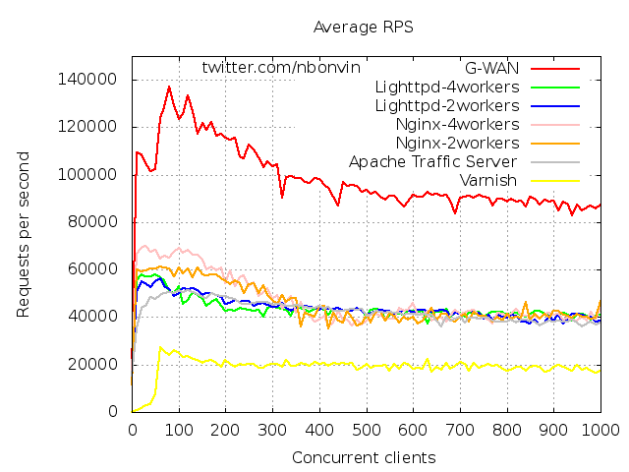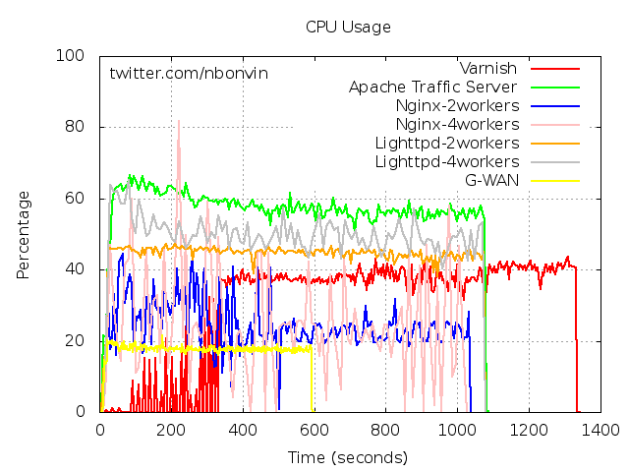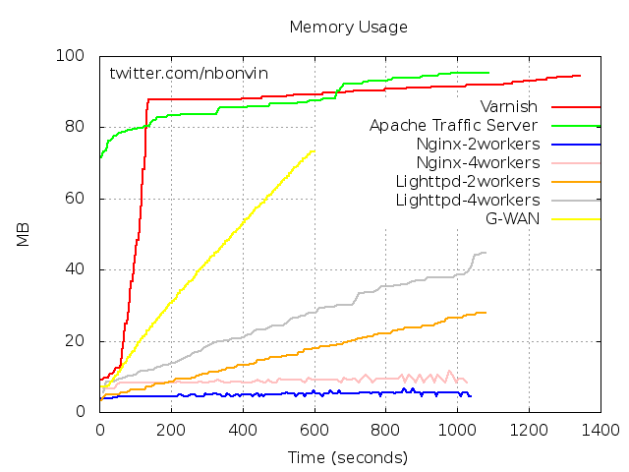Web Server Performance Benchmarks | LoadStorm
Over at his blog Spoot!, Nicolas Bonvin recently posted two summaries of the great work he’s done benchmarking how well various open-source and free Web servers dish up static content under high loads. Bonvin, a PhD. student at the …cole polytechnique fÈdÈrale de Lausanne (EPFL in Switzerland, specializes in high-volume distributed data systems, and brings considerable expertise and real-world experience to bear in designing his tests.
First Round of Performance Testing
In his first post, Bonvin laid out the evidence he’d accumulated by running benchmark tests against six Web servers: Apache MPM-worker, Apache MPM-event, Nginx, Varnish, G-WAN, and Cherokee, all running on a 64-bit Ubuntu build. (All Web servers used, save for G-WAN, were 64-bit.) This first set of benchmarks was run without any server optimization; each server was deployed with its default settings. Bonvin measured minimum, maximum, and average requests per second (RPS) for each server. All tests were performed locally, eliminating network latency from the equation.
On this initial test battery, G-WAN was the clear winner on every conceivable benchmark, with Cherokee placing second, Nginx and Varnish close to tied, and both strains of Apache coming in dead last. As Bonvin notes, it wasn’t even close. G-WAN, a small Web server built for high performance, completed 2.25 more requests per second than Cherokee (its closest competitor), and served a whopping 9 to 13.5 more requests per second than the two versions of Apache.
Performance Testing After Configuration Tuning
That’s all well and good…but how did G-WAN perform when the other servers could be configured and optimized to serve a high volume of static files? For this second battery of tests, Bonvin consulted with developers and system administration experts for each of the various servers to obtain an optimum configuration. (Some servers, such as Apache Traffic Server and G-WAN, boasted that they required no additional configuration.) He then tested each server with both two worker processes and four worker processes, measuring requests per second (mix/max/average), server CPU utilization, and server memory usage. For this second round, Bonvin tested Apache Traffic Server in lieu of Apache MPM-worker and MPM-event, and dropped Cherokee from the test run. (He later ran Cherokee against G-WAN and Nginx; it didn’t fair well.)
The results were both different and similar. G-WAN continued to outperform the pack, finishing well ahead of its next closest rival, Nginx. Apache Traffic Server faired better than Apache MPM-worker and MPM-event did in the previous tests. Surprisingly, Varnish Cache faired worse than it did previously, either matching or underscoring its maximum requests per second when Bonvin ran it out of the box.

In terms of resources, G-WAN had the second-to-best CPU utilization, bested only by Varnish Cache. G-WAN’s memory utilization wasn’t great, but it grew linearly over time. The worst performers in this category, Apache Traffic Server and Varnish, consumed more memory, and consumed most of it within the first four minutes of operation.


Speed vs. Ease
Does this mean the world should flock to G-WAN as its Web server of choice? Certainly, G-WAN posts some amazing performance numbers. Much of the performance boost comes from being designed from the ground up for maximum performance on multi-core processors. But G-WAN also benefits from being what the G-WAN Web site calls a “programmer’s application server.” G-WAN eschews more modern programming languages and application frameworks like PHP and .NET, relying purely on ANSI C modules for extensibility.
Needless to say, finding expert C programmers isn’t as easy as it used to be. That said, G-WAN may be just what’s needed to fulfill the high performance requirements of modern Web sites. As noted in an interesting thread on serverfault.com, companies are looking not only to accommodate more users, but to make their server farms more green – which means using less power to fulfill a given request. And as Bonvin demonstrates with his two tests, when it comes to doing more with less, G-WAN is currently king.